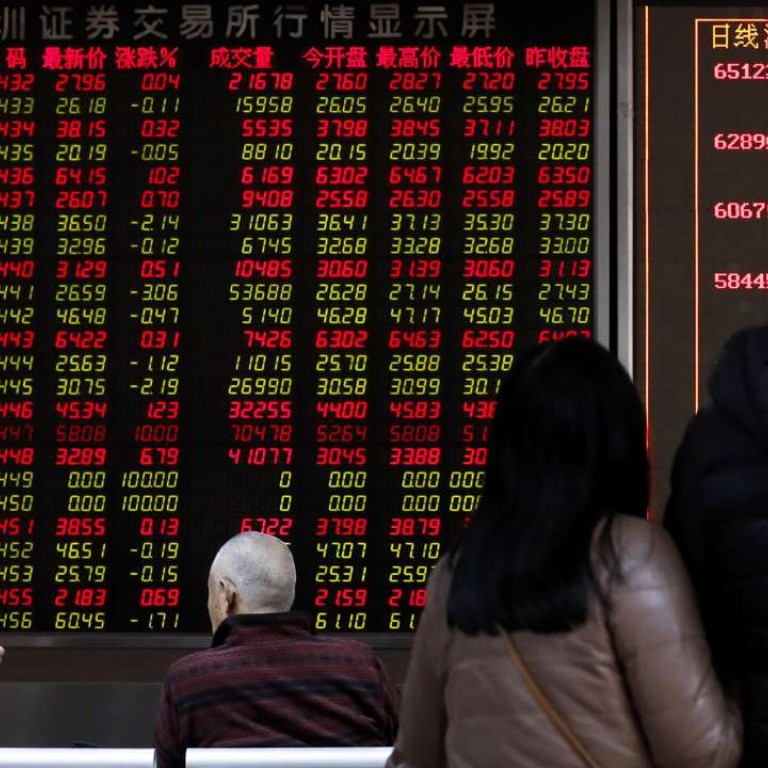
Property, consumer shares tipped for narrowest price gap between China, Hong Kong markets
UBS analysts see property, health care and consumer as the next sectors with the narrowest A-H shares price spread
The valuation gap between dual-listed stocks trading on China’s and Hong Kong’s exchanges has plunged to multi-year lows, as an influx of mainland capital boosts shares in the latter.
The property, health care, and consumer sectors are expected to see the sharpest fall in the spread between their share prices in the two markets in the near future.
The Hang Seng China A-H Premium Index, which measures the premiums of mainland-listed Chinese companies (A shares) over their Hong Kong-listed counterparts (H shares), dropped 0.4 per cent to trade at 118.2 on Tuesday morning. That means A shares enjoy an 18.2 per cent premium over H shares.
The index briefly touched a two-year low of 116.85 last Thursday, down 7 per cent from its recent peak of 125.6 earlier in the month.
The rapid drop in the A-H premium was driven by a rally in Hong Kong stocks. The Hang Seng China Enterprises Index (the H-share index) has jumped 7 per cent so far in February, outperforming mainland China’s benchmark Shanghai Composite Index, which has gained 3 per cent this month.
“Southbound funds [are] driving rapid A-H premium narrowing,” said Ting Gao, Meredith Lv, and Lei Meng, analysts for UBS, in a recent research report.
Strong mainland capital inflows have led to a drastic increase in the Hong Kong market’s trading volumes. The average daily turnover hit HK$96 billion last week, the highest weekly level in one and a half years and an increase of almost 70 per cent from January’s average daily turnover of HK$57 billion.
Month to date, daily southbound net buying averaged an impressive 2.7 billion yuan, up 90 per cent from January.
“Looking at A-H premium changes by sector, the top stocks by net buying, southbound investors’ recent preference was similar to that of institutional investors, led by insurers and mutual funds,” Gao, Lv, and Meng said.
“We believe southbound funds from institutional investors will continue to have an important impact on the relative valuation and performance of the A-share and Hong Kong stock markets.”
The H shares of Chinese consumer discretionary, insurance, banks and diversified financials are the biggest winners so far this month.
From February 2 to 16, the A-H price premium in consumer discretionary stocks had shown the biggest drop of 11.8 points to 172.5, according to a UBS estimate.
Second to that was the insurance sector, whose premium fell by 10.9 points to 111.6.
Banks and diversified financials ranked the third and fourth, declining 8.8 points and 8.2 points respectively.
Utilities, materials, property, energy, and industrials have recorded the smallest drops.
The UBS analysts expected property, health care, consumer discretionary and consumer staples to be the next group of sectors to see the biggest A-H premium drops.
These sectors are “preferred by insurers [investors from the mainland]” and still have significantly lower valuations than their A-share market counterparts.
The price/earnings (P/E) ratio based on estimated 2017 earnings for the property and health care sectors in Hong Kong are 6.7 times and 18.2 times respectively.
The P/E for consumer discretionary and consumer staples in Hong Kong are 18.7 times and 20.8 times.
“The continuous inflow of southbound funds is likely to help improve the valuation of [those] sectors in the Hong Kong market, thereby reducing the difference in valuation with the A-share market,” the UBS report said.
This is not only consistent with the investment style of A-share market insurers, who like financials, property and consumers, but is also in line with incremental funds’ need for allocation to large-cap stocks, they added.
Statistics from the A-share market may offer a glimpse of the style of insurer investors.
By the end of the third quarter last year, 53 per cent of insurers’ holdings in A shares were banks and 12 per cent were property stocks. Non-banking financials accounted for 7 per cent. Health care shares made up 5 per cent. Retail, electrical equipment, transportations, food and beverage, electronics, and auto accounted for a combined 10 per cent.
However, the UBS analysts don’t expect the A-H premium in Hong Kong-listed Chinese banks to drop as much as before.
“For banks, as their A-H spread is already close to the historical average, A-share premium narrowing may decrease in pace and impetus,” they said.

